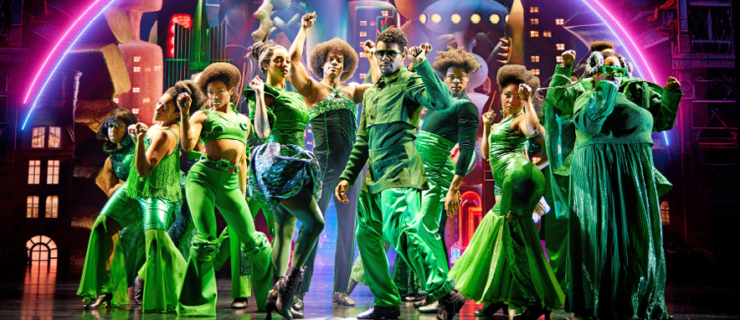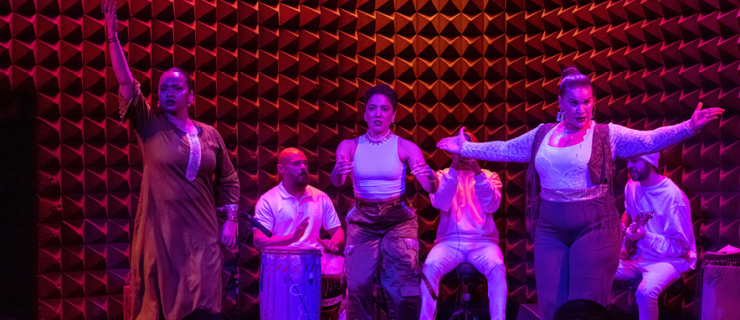Ellenore Scott: The Dynamo Choreographer With Two New Broadway Shows
At 19, Ellenore Scott was about to give up on a dance career. She knew she had the talent and the training to fulfill her dreams. But she didn’t sing well enough to land Broadway ensemble roles, and none of the companies she auditioned for made offers. The profession she’d worked toward since childhood didn’t seem to want her.
“Look at me now,” she says, with a jolly, infectious laugh that lights up the Zoom screen. Even someone without her sunny disposition would be smiling. Because this month, as she turns 32, she will be making her Broadway debut as lead choreographer with not one but two major musicals opening—the Billy Crystal vehicle Mr. Saturday Night, based on his 1992 movie about an aging comedian, and the long-awaited revival of the 1964 smash that made Barbra Streisand a star, Funny Girl. And this ebullient dynamo, whose first Broadway credit came a scant six years ago, is as surprised as anyone at the twists and turns that brought her here.
The journey included small contemporary companies—one of them her own, currently on hiatus—and television shows, pop concerts and dance conventions. “Who’d a thunk?” she asks.
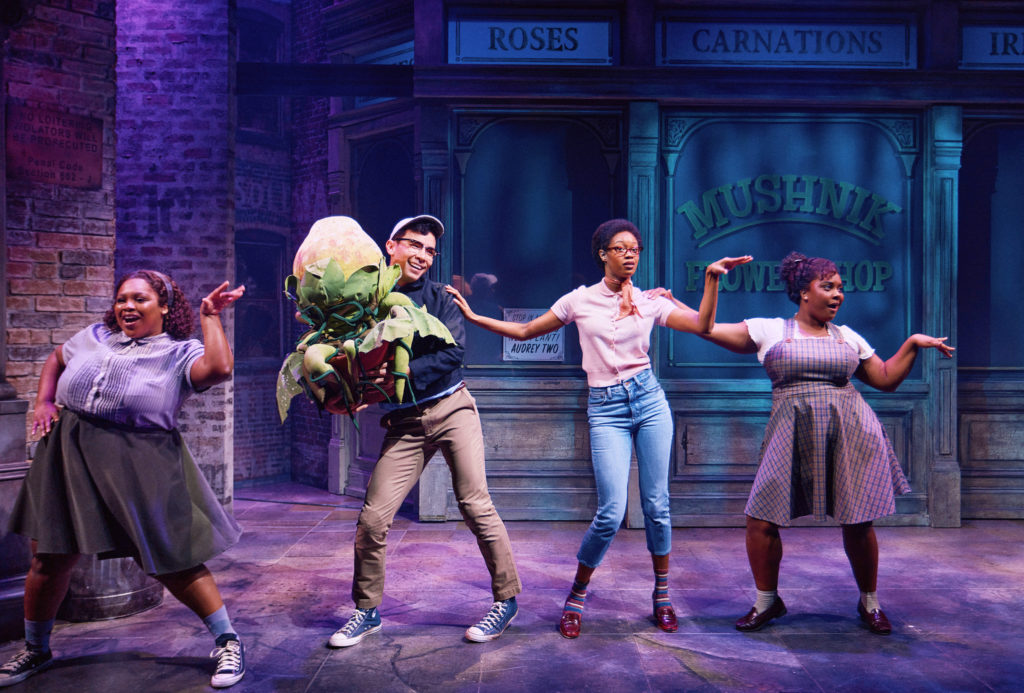
It all began in her early teens when she did the Ailey summer program and faculty member Christian von Howard recommended that she come to New York City for further training. She was accepted for the Ailey fellowship program, and her mother, her stepfather, their cat and their dog relocated from California. After a special audition for recent arrivals, she got into New York’s performing arts high school, LaGuardia, and was heading straight for concert dance. She started auditioning—just for practice—in her senior year, and after graduating in 2008, she got some work in von Howard’s company and several others. “Okay,” she remembers thinking, “now I’m gonna book everything.” But she didn’t. “It began to feel like for the entire year I was just being told no. ‘No, you’re too young,’ ‘No, we went with someone else,’ ‘No, you need to lose 15 pounds.’ I went into a dark space where I was just going to quit.”
In the midst of that darkness, she and her mother were watching “So You Think You Can Dance”—“because it was just the fun TV show that you watched when you were a dancer so you could talk about it with your friends.” When she heard on air that there would be another season and that tryouts were imminent, Scott told her mom: “Nothing else is really working out. I might as well audition. Maybe I’ll get a free ticket to Vegas and I can go see my dad.”
“I was just being told no. ‘No, you’re too young,’ ‘No, we went with someone else,’ ‘No, you need to lose 15 pounds.’ “
Ellenore Scott
Scott’s father, Michael, “an old-school pop-and-locker,” she says, had been performing with his brother, Robert, as The Scott Brothers since their teens. He met and married her mother, Michelle Ramos, a ballet dancer, when both were performing in SeaWorld San Diego’s City Streets show. Scott paints a hilarious picture of her mother playing a pregnant woman with what everyone thought was pillows under her costume. It was Ellenore. “And my mom says that every time I would hear the music start for the number, I’d go…”—she hikes her shoulders and drops her head in a protective curl—“because I knew I’d be bouncing around.” Not long after, The Scott Brothers (who retired their act just last year) got an offer in Las Vegas, where Scott’s mother found work as a showgirl. Between that, and the comic elements in her father’s dance routines, Scott feels a karmic connection to the Ziegfeld world depicted in Funny Girl, which centers on the vaudeville star Fanny Brice, played by Beanie Feldstein, and her lover, the gambler Nick Arnstein. When her parents divorced, Scott and her mother moved back to California, where Ramos taught at Dancenter in Capitola, a beach town near Santa Cruz, so that Ellenore could attend for free.
Looking back, Scott believes she got on “SYTYCD,” and made it to the finale and third runner-up, because she didn’t really care. “There was this element that I wasn’t bringing to my other auditions: ‘It won’t matter if I get another no.’ It had always been ‘I have to book this.’ Now there was no stress, I was able to relax. ‘If I get it, great; if I don’t, whatever.’ ”
Doing the show did more than relieve her funk. It opened her eyes to the dance opportunities that lay beyond the New York–centered worlds of Broadway and contemporary dance. “I had never for a moment considered that I would want to dance on TV,” she says. But now she was ready “to try as many different things as possible—to see what would stick, what I would like best.” She taught at dance conventions, which she’d never attended while a student. She did the Oscar telecast, she danced behind Janet Jackson, she even performed on “One Life to Live.” “I would jump from gig to gig and be like, ‘This wasn’t it. That didn’t fulfill me. This isn’t what I wanted.’ ”
When she landed “Smash” in 2011, she was told that Joshua Bergasse wanted her for pre-production. “I didn’t even know what that was,” she recalls. “I was nervous.” But the validation she felt coming up with moves that he liked thrilled her. “I recognized that maybe I want to be a choreographer more than I want to be a performer.”
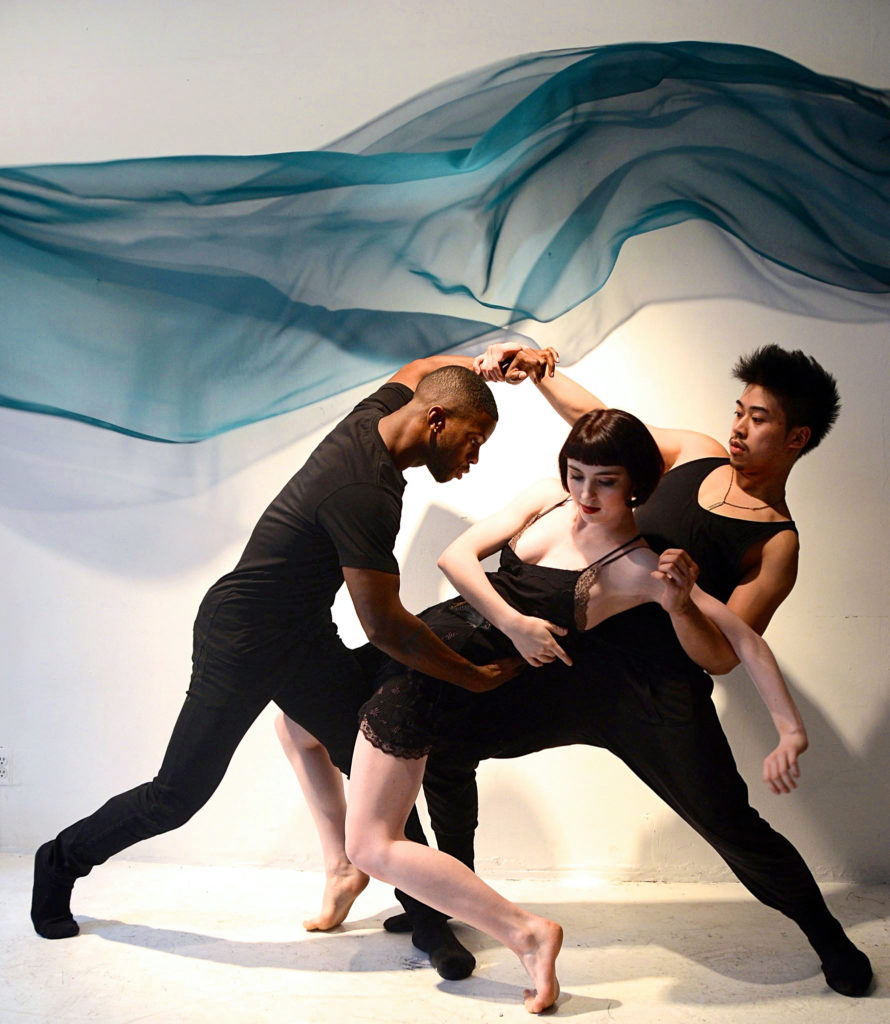
Of course, choreographing is easier said than done. “No one was taking me seriously, because I was 22,” she says. “People were like, ‘Wait to do that when you’re in your 30s and 40s.’ ” Her mother, who by then had gone into the administrative end of dance (she was the director of Dance/NYC for several years and is now executive director of Alternate ROOTS, which supports community arts initiatives in the South), told her that she needed to hone her choreographic skills on other bodies, not just her own. She guided Scott as she used the convention money she was making to start ELSCO Dance, a “contemporary-fusion” company. Whenever she got the chance, she let people know that she was available to assist on musicals. A boyfriend who’d been cast in one of Andy Blankenbuehler’s shows mentioned her name when he was looking for women to help on a new one—which is how Scott ended up “working on Hamilton before it was Hamilton” and assisting Blankenbuehler on the 2016 revival of CATS.
Blankenbuehler remembers running into her socially here and there long before, and being struck by that captivating personality. In pre-production, he says, he found that her “generosity of spirit came out in her dancing” also, singling out her “rhythm and syncopation,” her “exceptional line” and “how she masters so many styles of dance.” On CATS, he watched her “put out fires, solve problems and bolster the cast”—abilities he says will serve her well as a Broadway choreographer.
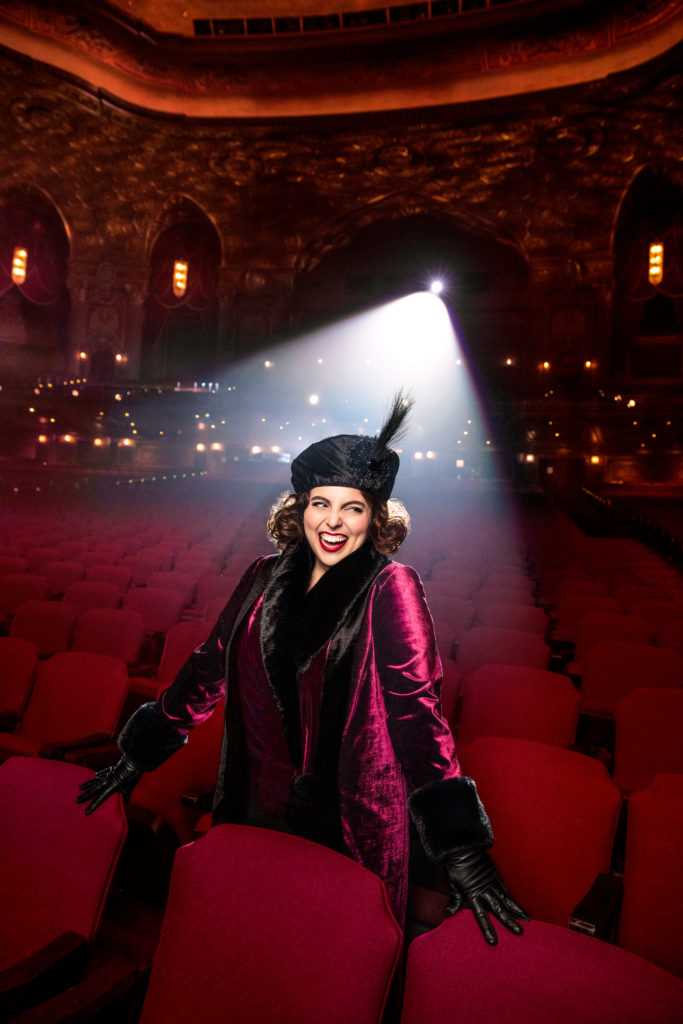
Funny Girl director Michael Mayer met her two years later, when she was Spencer Liff’s associate on the Go-Go’s musical Head Over Heels. When Mayer looked at her Instagram videos, he says, “I was really taken with her own work. It seemed very fresh—I love when I see a choreographer making shapes and responding to music and rhythms in ways that are surprising.” And surprise was what he was seeking for the current off-Broadway revival of Little Shop of Horrors, “because everybody’s seen it so many times and I just didn’t want to do the same thing. I knew Ellenore hadn’t done a ton of shows on her own, but I thought she would be a really great fit. She brought the physical life of the show to a great, exciting, funny place.”
When Funny Girl came along, it was natural for Mayer to turn to her again. But the show has some tap numbers, and she wasn’t a tap dancer, like his friend Ayodele Casel. So he asked the producers if they were open to having two choreographers, one for tap and another for everything else. They agreed, and so did Scott. The ensuing “balancing act,” he says, has been “fun to watch. Neither of them is a pushover, but they’re both such lovely human beings. If you’re going to do something with two choreographers, it should only be that pleasant.”
Scott’s collegial spirit also gets high marks from her co-artistic director at ELSCO, Jeffrey Gugliotti, who took her class at a college workshop and then went straight from school into her company as a dancer. He’s followed her into musicals, as well, as the associate choreographer on Little Shop and Funny Girl. And the ELSCO dancers are now her pre-production team. “It’s still a very vulnerable place,” she admits, “to be the choreographer of a Broadway show and say, ‘I don’t know what I wanna do here—let’s figure this out.’ So I like having dancers with me that I’ve known for a long time. If they say, ‘This doesn’t really feel good,’ I’ll trust their judgment.” That’s a large part of why dancers love working with her, Gugliotti says. “She’ll come into the room with an idea and some movement, but she really allows the dancers to influence where the choreography will go. She thinks about what will look best on them, what will make them enjoy what they’re doing and feel the most comfortable—especially on Broadway. Doing a show eight times a week can be tough, so that’s something she really tries to take into account when we’re creating work.”
Some of that solicitude may stem from her experience on “SYTYCD.” “It jumpstarted my career,” she concedes, “so I have no regrets. And I did spend the last 10 years trying to be a choreographer on the show.” The show also became a pivotal part of her personal life: A few years ago she was starting to chat with a guy on Tinder, who initially didn’t recognize her as the dancer he’d adored back in college, watching the show with his buddies. “I’m going to marry that girl,” he’d told them, to which they replied, “Even if you ever met her, she’d never date you.” Another big Ellenore Scott grin lights up the Zoom window: “They were all at our wedding, eating their words.”
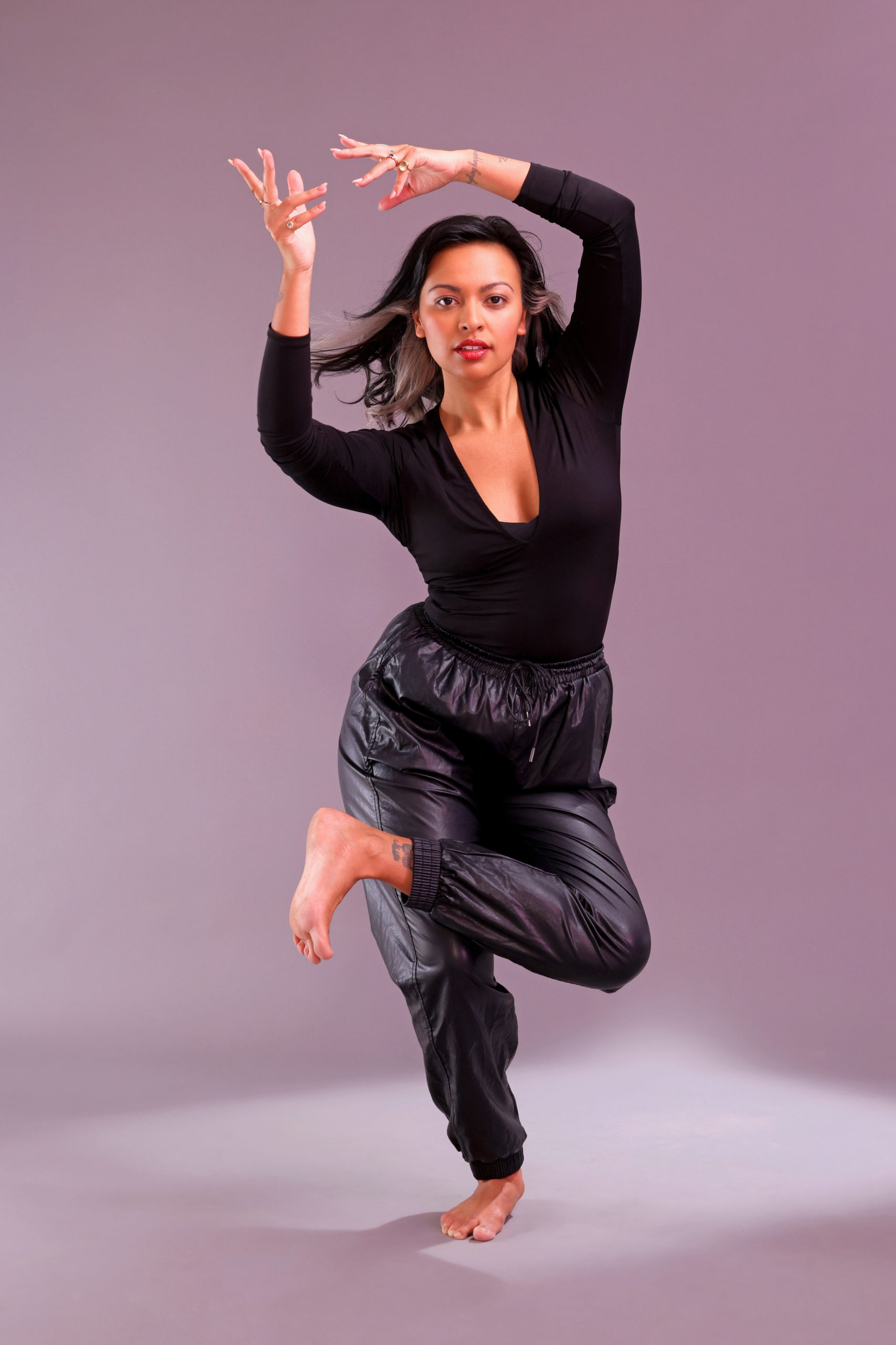
But looking back at “SYTYCD” now, she feels that had she not been so young, she would have made some noise about “the way things were run”—the grueling schedule, the manufactured tension, what she saw as disregard for the physical and emotional well-being of the contestants. So she was careful, starting ELSCO, not to replicate that kind of atmosphere, and Gugliotti, Mayer and John Rando, who hired her to choreograph Mr. Saturday Night after seeing Little Shop, all rave about how much fun she brings into the studio. “The humor and joy infects the room in such a lovely way,” Rando says. “And she has such a wonderful laugh. That’s really important on a show like ours.”
That winning personality is on vibrant display in the jaunty videos about theater, clothes and her passion for anime that she posts on TikTok, which provided her a much-needed creative outlet during the pandemic. Scott also contributed the choreography for the app’s crowdsourced musical version of Ratatouille, and has, to her amusement and amazement, amassed more than a million followers and lots of influencer swag—“I got this mattress for free!” she crows. She continued posting even as she plunged into the juggling act that is birthing two Broadway musicals simultaneously, because she doesn’t know what’s next after this month’s openings. She’s hoping that doing three comic musicals in a row won’t pigeonhole her, but she won’t mind if she becomes the go-to choreographer for comedies. “My favorite thing in the whole world is to laugh,” she says. “Making people smile is one of the greatest gifts, and if I can do that, then my work here is done.”



